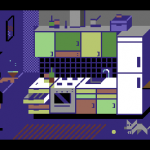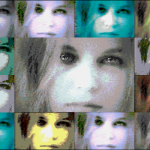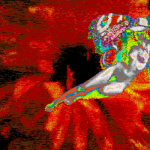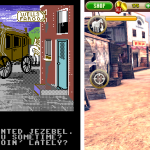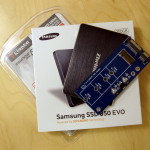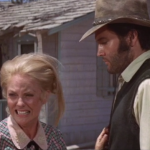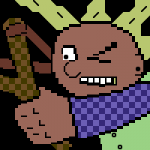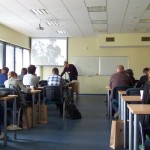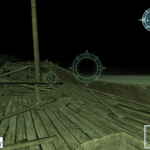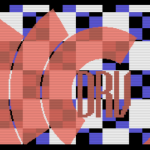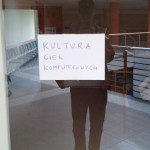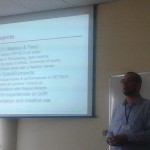Posts filed under 'demoskene'
After more than two years of improving and honing my own project, and checking the competition I got the urge to share some of my thoughts on what makes or breaks a PETSCII editor. A lot of this stuff is actually pretty self-evident in the end, but it has taken hours and hours to figure it out. Bear with me 🙂
Not pixels
When comparing a PETSCII editor to a generic paint program there are plenty of similarities, but also notable differences. Instead of tens of thousands of individual pixels we’re dealing with a relatively low-resolution grid consisting of predefined symbols. On the one hand it is easier to deal with text, since tools such as lines, ellipses and curves are rather useless, but on the other hand there is a constant need to effectively choose and alternate between the available symbols, which requires different kind of thinking altogether. In other words, adopting tried and tested methods from paint programs alone will not lead to optimal outcome.
Among the most powerful features of PETSCII (the editor) are smart rotation and flipping of a selected area which take into account the form of the character. I take no credit for these, as it was Tero who came up with the idea in the first place and wrote the remapping tables. Not every character can be rotated or flipped, but even so you’ll save a lot of time when working with symmetric forms. See the following image for an example of how “smart” flipping works as opposed to simply moving the characters:
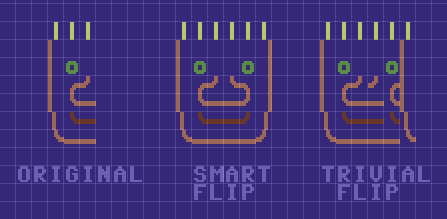
Typing vs. drawing
In essence there are two main methods to get characters on the screen. The traditional way, typing, was initially the only possible option and is still heavily present in modern-day editors (for example AAE). A mouse is something of a rarity on C-64s and graphical symbols can be conveniently found on the keys, so on a real machine typing makes all sense – but a lot less so on your PC or Mac which has a different keyboard to begin with.
I’ve included a half-assed typing mode in PETSCII, mostly for the sake of actually writing text, even though all the symbols can be typed too if it’s really necessary. In any case, drawing with a mouse was the preferred metaphor right from the beginning. There are pros and cons to both, but using a mouse definitely makes it quicker to sketch forms in the spirit of direct manipulation. A little but important detail is to show the character before it is actually placed: otherwise you end up constantly undoing the operation.
Character selection
When drawing, a great deal of time is spent on selecting the next character. The first thing to do was to reorganize the otherwise messy character set to group related symbols together (thanks go to Tero again). Jambonbill went even further and repeated the same characters multiple times to create visually continuous groups.
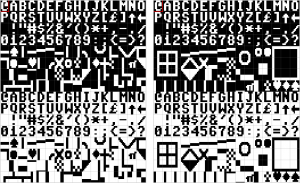
A well-organized character selector is a good start, but much more can be done to facilitate an efficient workflow. For example in PETSCII the aforementioned rotate and flip operations work with individual characters as well: press a single key and get the next corner for a window or a box. In the same lines I came up with “smart sets”, predefined sets that you can walk through with a keypress. Another little bit that arose from a real need was to let the user quickly shift stick characters (used for various lines) right/left/up/down.
As a piece of PETSCII art is drawn, you typically start accumulating useful characters and their combinations in the image itself. Instead of always going for the selector – which in Playscii even occludes part of the canvas – it makes sense to quickly pick a character from the surroundings.
Grid
You can get away without a grid if the images are comparably small, but all in all a well-working grid can be of great benefit when selecting regions and aligning symbols with each other. After at least three complete rewrites of the drawing code I’ve eventually come up with the following findings:
- Don’t make the grid intrusive (thick, contrasty etc.)
- No single color works for the grid alone. Instead, darken light colors and lighten dark colors to keep it harmonious.
- It’s useful to have a quick on/off toggle
Below a few real-life examples of how the grid looks like in different editors.
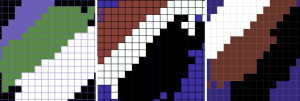
File formats
The file formats supported by an editor tend to reveal its intended use. Some editors are clearly geared toward actual machines, stick to their limitations and facilitate easy exporting to formats like .prg, which can be run on real hardware. At the other end of the spectrum you might get only PNG files or GIF animations out for easy distribution on the web.
I’ve been balancing between the two extremes myself: initially the idea was to support software development and participate in demoscene competitions. However, it soon became evident that many people needed and wanted to distribute their works online for easy viewing, so I had to give in and add a PNG exporter. Supporting multiple exporters for multiple machines obviously means plenty of error-prone extra work.
Automatically converting existing images to PETSCII is a different discussion altogether. Having said that, many users would welcome such a feature for, say, converting their self-portrait into retro character art. In addition, an artist can benefit from a reference image, as some of them prefer sketching on paper first before firing up the actual editor.
Animation and other fancy features
Creating proper support for animation is probably as big a task as all the others combined. As of now there are animation features in multiple editors, but none of them really go beyond simple copy/paste and playback of the frames. Think of a proper video or animation editor to realize how many possible features there could be.
Undo and redo aren’t exactly “fancy” features from a user perspective, but it takes some effort to include them in your editor. It’s definitely a good idea to implement them early on, as adding them as an afterthought might prove painful – speaking from experience 🙂 There are more and less sophisticated ways to go about undo, but as we’re dealing with quite little data it’s not all that bad to just save the buffers between operations for undoing or repeating the steps. Another welcome safety network comes in the form of automated backups.
There are a couple of editors that support layers, approximately in the lines of your familiar photo editing software. I can definitely see some uses for them, for example for separating the background from foreground figures. Then again, to fully support layers requires considerable effort, and they aren’t quite as useful as in photo editing, as you can’t really have things like translucency or color manipulation.
Accessibility
While some users are after a genuine user experience – tapping away on a real C-64 – most seem to welcome the ease of cross-development. Supporting the three main desktop platforms (plus their different flavors) is tedious at best, and thus some of the editors run on Windows only. Being a Mac/Linux user myself this was, of course, out of the question, but luckily Processing lets you export multiplatform applications with little extra effort. On the downside, Java is required on the target machine, which will turn off some possible users (and rightfully so).
As I see it, the best bet these days would be to develop for the web. In spite of the possible troubles with browser compatibility, web applications tend to be multiplatform by nature. In addition, you don’t need to go through the trouble of installing anything on the local computer. If I were to start from scratch, I’d probably take this route. As of now there are two online editors already, even if neither of them is quite complete yet (see my previous post).
Another angle to accessibility follows from the fact that people use laptops and tablets with a crammed keyboard. Therefore, relying on numpad or function keys beyond F10 is obviously out. Likewise, touch pads (esp. Apple ones) might not have more than one or two mouse buttons available, which requires some thought. Even more so for touch screens, which again introduce a new set of challenges.
Documentation
I can wholeheartedly relate to programmers that want to spend their free time on interesting coding problems instead of writing documentation. Even if it’s not exactly fun, there is a need for at least some product support: be it a manual, online help or a website. A few nice example works done with the editor definitely don’t hurt, as they show what’s possible and spark user interest.
Conclusion
Cross-development tools for PETSCII are a surprisingly new phenomenon. As far as I know, they’ve been around for not much more than five years, after which things have really started picking up speed. The threshold of starting to do character art has probably never been lower, and new authors are popping up every now and then.
All in all, the challenge of programming a PETSCII editor is twofold: there’s the tech and then there are the users. It’s not hard to put together basic minimum functionality, but going beyond that has turned out so laborious that most projects have been abandoned shortly after their initial release. PETSCII too would require quite an overhaul by now to accommodate any new major features – feature requests are, of course, neverending.
Implementing new modes, tools and so on is one thing, but thinking about the workflow and making the features useful is another. If you’re not much of an artist yourself, it’s at least good to have one in the loop: user feedback or even going so far as to observe someone’s work over their shoulder provide valuable insight and motivation. Ok ok, that was the design teacher in me speaking 🙂
April 6th, 2016
I’ve been rather actively involved with PETSCII art for the last couple of years, coding, drawing and even conducting a bit of research. As PETSCII is kinda fashionable now, and many people would like to experiment with it, here’s a little overview of the available editors and their pros and cons. The list aims to be complete, so if there’s anything missing, let me know. Let’s start with native tools and then move on to cross-development.
It’s a fine line, but I’ve decidedly excluded various text editors that could be used for character graphics as well.
Digital Paint 4.0 (C-64, link)
Probably ok for its time – can’t quite pinpoint when exactly it was released. In addition to the original version coded by Aaron Hightower there are various hacks by sceners who added missing features. In addition to typing, you can paint filled boxes and edit colors.
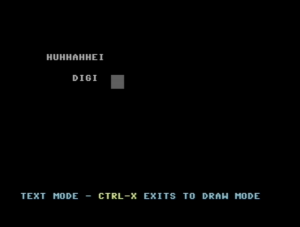
TBoard-Painter 1.1 Pro (C-64, link)
Another oldie, this time by Tao/Triad. The most notable extra feature is the 1/4 char pseudographics drawing mode. The image can be larger than the screen size, which together with the name suggests it was meant for BBS graphics. As a nice little touch the x/y location display uses hex numbers 🙂
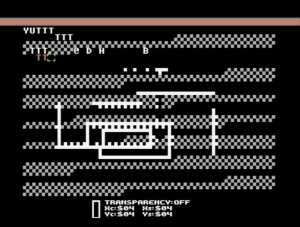
Tyronpaint 2.1 (C-64, link)
Not much new to say about this: you can type text, change the color or draw blocky 1/4 dots. The images can be higher than 25 lines. Created by Lynchbit/Alpha Flight in 1996, this improved version is from 2006.
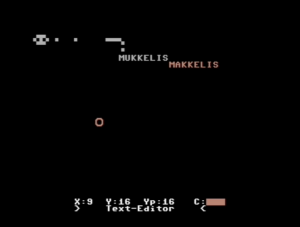
Kaleidoscope 4.0 (C-64, link)
Very simple, but at the same time easily comprehensible editor by BroBryce64 all the way from 1989. Not many features there, but you can type chars and change colors. A curious extra is the “rainbow mode” which cycles the colors after each character.
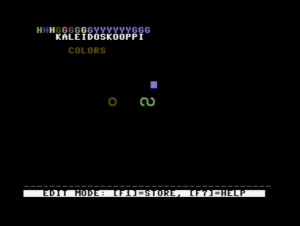
PETSCII Paint 0.5 (C-64, link)
A rudimentary tool by 0xDB from 2011. The basics do work: you can select characters, change colors and save the outcome, but even simple things tend to be on the tedious side.
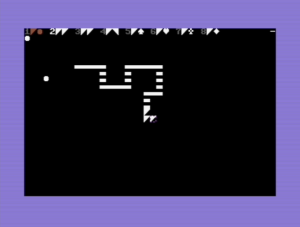
Petscii Editor 4.6 (C-64, link)
FieserWolf’s editor is undoubtedly the most popular one when it comes to programs running on real hardware. As the version number suggests, there have been plenty of iterations and the workflow has been improved a lot since the initial releases. Once you get used to the UI, there’s useful functionality such as copy/paste, recoloring and multiple pages available. Several notable works have been produced with this editor.
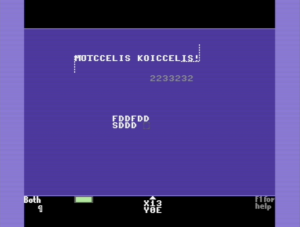
Online PETSCII Editor (online, link)
A web-based solution by Krissz from 2013. I like the idea that you can draw on a normal browser without installing any software or digging the old warhorse from the closet, but this particular project seems to have been abandoned. You can both draw and type, and the character selector is well though out. On the other hand, there is little functionality to support advanced editing.
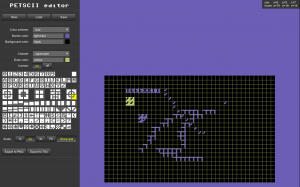
PET Shop Pro (online, link)
As of now there’s very little documentation on this editor by Jambonbill, as it is still work in progress and not officially released. Nevertheless, quite a promising online tool which lets you even do animations. Originally based on Krissz’s editor (see above), but was mostly rewritten after that. The character selector is well designed, you can edit images of various sizes plus export them to different formats, and even script the editor. There are still some bugs around, which will hopefully be ironed out at some point.
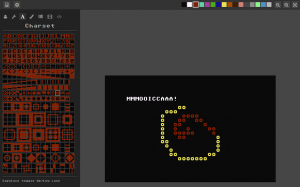
CBM .prg Studio (Windows, link)
Arthur Jordison’s CBM .prg Studio is a complete development environment that lets you create software for the Commodore 8-bits. One of its parts is the screen editor, which is actually quite usable for artistic endeavours too. Largely served as the source of inspiration for the editor below.
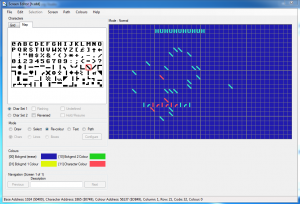
APE (Windows, link)
APE (Another Petscii Editor) by MrXaliasH from 2013 is Windows-only, but does run fine under Wine as well. The basic functionality (drawing, color selection, copy/paste and even undo) is there, but it seems the project was quickly dropped after its initial release.
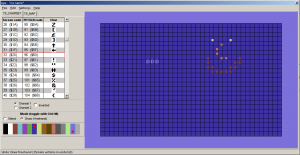
C64 AAE (Windows, link)
C64 ASCII Art Editor by RADSoft hails from Poland. Windows-only, but runs somewhat ok under Wine except the color editor. Apparently the development ceased in 2012, but in spite of that there are some unique features – most notably layers, which were a firstie in the scene. The animation features are also among the most advanced. Drawing happens by writing, but unfortunately the key mapping doesn’t suit all keyboards. Furthermore, keyboard shortcuts require quite heavy juggling with various ctrl/shift/alt combinations.
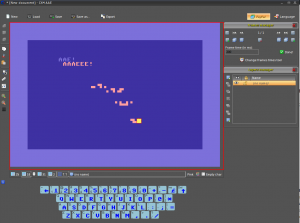
EDSCII and Playscii (multiplatform, link)
EDSCII by JP “Vectorpoem” LeBreton was one of the first editors I tried in 2013. Later on its development halted and Vectorpoem created a new tool called Playscii. Both versions focus on PETSCII-like retro graphics instead of sticking to the exact capabilities of the C-64. Still under development, Playscii already features plenty of functionality such as different character sets, layers, animation frames and smooth zoom, plus of course the standard editing tools. There is also something called “game mode”, which I didn’t quite understand at first sight, though.
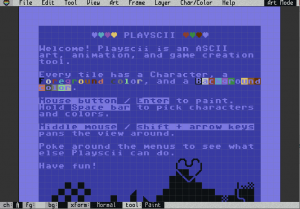
PETSCII (multiplatform, link)
Do not expect me to be very objective with this 🙂 The project, initially coined by me and Dr. TerrorZ, started in 2013 and has received occasional updates ever since. In addition to the standard stuff there’s rudimentary support for animation and other machines than just the C-64 (VIC-20, PET and Plus/4). One recognized problem is that because of Processing, the program runs on Java, which spells trouble these days. The GUI is undeniably “no-nonsense” with most functions hidden behind single-key shortcuts.
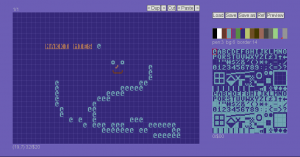
In conclusion, there’s already quite a variety of tools available these days, and some are surely still missing from the list – not everyone has made their software public in the first place. At one end of the spectrum there are hardcore editors running on genuine hardware, and at the other retro art oriented tools aimed at recreating the old look with less regard for authenticity (at times called fakescii). Pick your poison!
edit: More additions, thanks to Goto80 for the tips!
edit2: More details on Pet Shop Pro received from Jambonbill himself.
March 22nd, 2016
Hieman hyytynyt kirjoittelutahti on toivottavasti taas lähdössä nousujohteiseksi nyt, kun intensiivi-workshopista ja opiskelijavalinnoista on selvitty. Eilen ja tänään tuli sentään pihalle pari kepeähköä pätkää: ensimmäinen Teron kanssa PETSCII-taiteesta Skrollissa ja toinen WiderScreenissä Merja Salon kanssa Seppo Kilgastista, joka teki 1980-luvun lopulla Amigalla valokuvataidetta. Widerin artikkeli on linjoilla täällä ja Skrollin juttu tässä pdf:nä. Alla Teron “Evening at Home” ja kaksi kuvaa Kilgastin lopputyöstä.
March 16th, 2016
Mennyt vuosi jää mieleen etenkin stressin vuoksi: monenlaista velvollisuutta, vaatimusta ja haastetta oli niskassa lähes koko ajan niin töiden, opintojen kuin siviilielämänkin taholta. Pitkään jatkunut synkeä sää tekee loppuvuoden tunnelmista ehkä vieläkin lakonisemmat — toivottavasti 2016 jo hieman helpottaa, tosin tuskin ainakaan ennen kesää. Jälleen siis kootusti touhuja vuoden varrelta:
Skenetykset
Vuosi jäi taas kovin epätuotteliaaksi, vaikka jotain sentään tuli tälläkin saralla näppäiltyä. Paybackeille saatiin aikaiseksi pieni yhden osan MSX-intro Suksimme kuuhun, Assemblyille ei mitään, ja Vammala partyille yhden osan demo sekä ihan virallisestikin julkaistu PETSCII-kuva. Zoot jäivät perhe- ja majoitussyistä harmillisesti väliin, mutta tulevathan ne sieltä taas kahden vuoden päästä.
PETSCII-editori palasi reilun vuoden tauon jälkeen elävien kirjoihin, ja tunkkasin mukaan yhtä sun toista pientä parannusta. Bugikorjausten lisäksi tein myös uusia ominaisuuksia, kuten asetustiedoston ja optimoidumman piirtokoodin. Uskollisia käyttäjiä tuntuu edelleen löytyvän, vaikka suurin PETSCII-huuma jo laantuikin. Zoon tekstigrafiikkakompossa kaikki paitsi yksi tekele olivat edikalla tehtyjä, minkä lisäksi loppuvuodesta Debris työsti useita Star Wars -aiheisia kuvia.
Metaskeneilyn puolella tapahtui sentään enemmän: artikkeli kräkki-introista päätyi ihan merkittävälle foorumille ja väitöskirjakin eteni kymmeniä sivuja. Demoscene Researchiin tippui päivityksiä melko tasaisesti ja mukaan saatiin uusi ylläpitäjäkin. Assemblyillä päädyin Ylen haastateltavaksi demojen tiimoilta (pitkät jäykät horinat leikattiin hienosti luontevan näköiseksi pikku pätkäksi).
Kirjoitushommia
Kaikenlainen kirjoittelu vei suuren osan vuoden ajasta. Väitöskirjan raakatekstistä lienee n. 2/3 valmiina, joten tänä vuonna lienee ihan realistista saada se kaavittua kasaan ja sitä myötä lopultakin pois päiväjärjestyksestä. Julki tuli seuraavia:
Tavalla tai toisella eteeni päätyi myös muutama arvioitava artikkeli, ja kun kutsuivat Puolaankin keynote-puhujaksi, niin akateemisten luottamustehtävien osalta 2015 oli oikein huippuvuosi. Vastapainoksi olin kylläkin joutua kilometritehtaalle, kun määräaikainen lehtoraatti loppui ja jouduin hakemaan paikkaani uudestaan.
Virittelyjä
Kaapit ovat sen verran täynnä jo koneenraatoja, että tänä vuonna ei tullut juuri uusia hankintoja — jouluksi sentään Mikolta paketissa oleva Canon X-07. Säätöhommat keskittyivät lähinnä tuoreempaan rautaan ja Linuxiin: Minttiä meni useampaan koneeseen, Mac Minit saivat uutta tekniikkaa sisuksiinsa ja Shuttle-raato palasi elävien kirjoihin.
Vuoden avainsana on Linuxin lisäksi ollut SSD: kaikki vähänkään modernimmat koneet on nyt varustettu sellaisella. Ja miksipä ei, kun nopeusero on parhaimmillaan moninkertainen. Erityisesti Linux tuntuu hyötyvän SSD:stä, sillä ohjelmien käynnistysajat ovat pudonneet sekuntiin pariin, eikä koneen käynnistymistäkään tarvi pitkään odotella. Toki Mäkitkin nopeutuvat, mutta eivät aivan samassa suhteessa.
Eläviä kuvia
Kuten toissa vuonnakin, elokuvia tuli katseltua reippaasti. Mitään tarkkaa laskuria ei ole, mutta lukema lienee pitkällä kahdensadan päällä. Länkkärien osalta pidin oikein kirjaa: 160 aiemmin näkemätöntä, minkä lisäksi jonkin verran klassikkojen uudelleenkatseluja. DVD-hylly tursuaa jo siinä määrin, että pitää ruveta keksimään jotain sijoitusratkaisua tyyliin imaget talteen ja levyt varastoon. Tai vaihtoehtoisesti levyt ja kannet talteen ja kuoret kuuseen.
Ihan tätä tahtia tuskin jatkuu enää 2016, sillä länkkärien osalta merkittävimmät teokset on jo nähty, ja luvassa on enää valtaisaa bulkin kaapimista, harvakseltaan ilmestyviä uusia leffoja sekä HD-julkaisuja klassikoista. Länkkärimaratoneja pitää jatkaa edelleen niiden viihdearvon takia: menneenä vuotena oli kaksi virallista ja yksi epämuodollisempi sessio.
January 1st, 2016
Kävin sanomassa muutaman sanasen demoista Ylen Assembly -dokumentissa, kun kerran oikein pyydettiin – tänä vuonnahan demokompo näytettiin peräti kokonaan livenä valtakunnanverkossa. Tarkalla leikkauksella lopputulos näyttää ihan järkevältä, eikä näkyviin jäänyt pahempia tökkimisiä tai höläytyksiä. Pätkä on katseltavissa Areenassa täällä: http://areena.yle.fi/1-2874378?autoplay=true
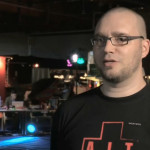
August 2nd, 2015
Sepäs lausutaankin “wudsh” eikä “loz”. Perjantaista maanantaihin meni Lodzissa Puolassa, jossa pidettiin Kultura Gier Komputerowych 3 -tapahtuma teemalla “Behind the Scenes”. Samalla tuli pidettyä elämäni ensimmäinen keynote, teemana “Generations of Consumer Computer Graphics as Seen in Demos”. Presis käsitteli sitä, millaisia eri paradigmoja kotitietokoneiden grafiikassa on nähty ja miten ne ovat vaikuttaneet demojen ulkoasuun. Aihe oli aika tekninen, mutta sain muutamalta tyypiltä ihan kiitostakin valaisevasta esityksestä. Sunnuntaina oli vielä toinen presis aiheesta PETSCII-taide, mikä herätti useammankin kuuntelijan kiinnostuksen – Teron kanssa tekemäni editori sai taas lisää käyttäjiä.
Suurin osa esityksistä oli puolaksi, joten sikäli olin valtaosan ajasta mitään ymmärtämättömänä kuunteluoppilaana. Kanadassa tämä oli ratkaistu niin, että jos esitys oli ranskaksi, niin edes slaidit olivat enkuksi. Tärkeintä antia olivat tietysti skeneaiheiset presikset, joita oli omieni lisäksi kolme: Patryk Wasiakilta, Gleb J. Albertilta sekä Pawel Grabarczykiltä (yksi tosin puolaksi). Ja tietenkin näiden tyyppien livenä tapaaminen oli merkittävä kokemus. Eiköhän tästä taas seuraa pieni motivaatiopiikki omaankin demotutkimukseen.
Viimeisestä kuvasta kiitos Glebille, keskimmäisestä en tiedä kuka näppäsi.
May 26th, 2015
Jo vuosi sitten kirjoitettu artikkeli Crack Intros: Piracy, Creativity, and Communication tuli juuri tänään julki International Journal of Communicationissa. Teimme pätkän Patryk Wasiakin ja Daniel Botzin kanssa ensin Popular Communication -lehteen, mutta artikkelien suuren määrän takia osa siirrettiin IJoC:iin – ja hyvä niin, sillä jälkimmäinen on huomattavasti korkeamman profiilin julkaisu. Lehti on myös avoin, joten artikkelin voi ladata suoraan tästä: http://ijoc.org/index.php/ijoc/article/view/3731/1345
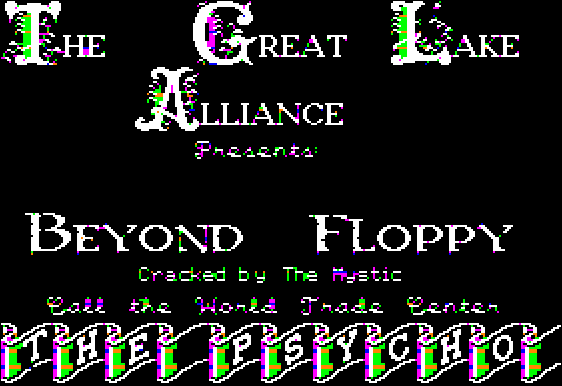
Apple II:n kräkkiruutu. Lisää täällä.
March 27th, 2015
PayBack 2015 on ohi ja mukana oli pitkästä aikaa omaakin tuotantoa. Nimimerkkien Dr. Omedaar ja Camellia kanssa tehty yhden osan MSX1-kikkale Suksimme kuuhun kilpaili kasibittikompossa ja sijoittui ilmeisesti toiseksi. Itse efekti on jo muutaman vuoden vanha, mutta ennen tätä sitä ei oltu saatu käytettyä mihinkään (pl. Sharpilla rankasti modifioituna). Youtubesta voi katsella huonon videon tai tästä paremman videon, mutta parhaimmillaan produ on tietysti oikealla koneella ajettuna: suksimme.zip
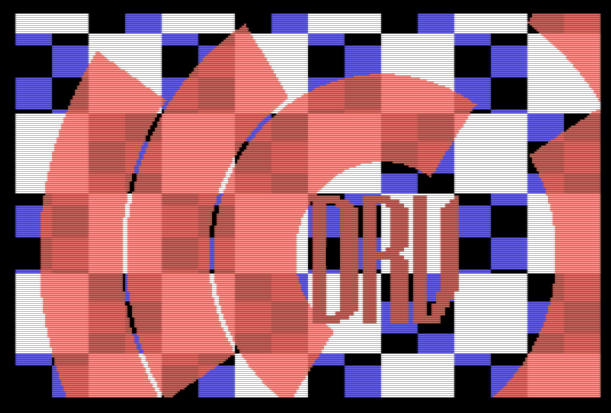
February 1st, 2015
Svenssonit tekivät kirjan, minä arvostelin. Eli Generation 64:n arvostelu juuri julkaistu Turun yliopiston Agricola-verkkopalvelussa: http://agricola.utu.fi/julkaisut/kirja-arvostelut/index.php?id=3633
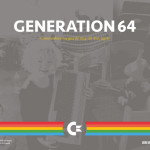
November 7th, 2014
Vanhat Fit-demot alkoivat muuttua hiljalleen vaikeasti ajettaviksi – Mäkillä lähes mahdottomiksi. Kymmenen vuotta sitten tietotekninen kenttä näytti kovin erilaiselta: esimerkiksi Mäkkäreissä oli vielä PPC-prosessorit. Rosettan kadottua Mac OS 10.7:n myötä ei vanhoja produja saanut enää helposti näytille, kun en jaksanut ruveta kääntämään ja paketoimaan kaikkia yksitellen jälleen kerran. Raspberry Pi:n myötä iski taas pieni porttausinto pari vuotta sitten, mutta kaavailtu demokokoelma jäi silloinkin tekemättä. Nyt sain lopulta aikaan, kun Manukin teki menuun grafiikat:
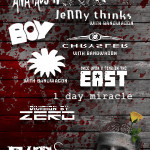
Raspi-versio on vielä tekemättä, mutta Linuxilla ja etenkin OS X:llä saa nyt nuo kymmenen tekelettä ajettua. Vanhaan malliin sorsat ovat taas jaossa, tällä erää SVN:ssä: svn://www.kameli.net/marq/autopsy. Jos intoa ja aikaa sattuu riittämään, niin olisihan tuohon lisättävää. Etenkin 4k-introt olisi kiva saada kaikki. Anataus 5–7:n sorsat ovat hukassa, joten ne jäävät aika väistämättä sarjasta puuttumaan. Niin ja sitten vielä se linkki.
edit: Oli jäänyt libbejä pois OS X -versiosta. Nyt pitäisi olla toimivampi.
October 19th, 2014
Next Posts
Previous Posts
















